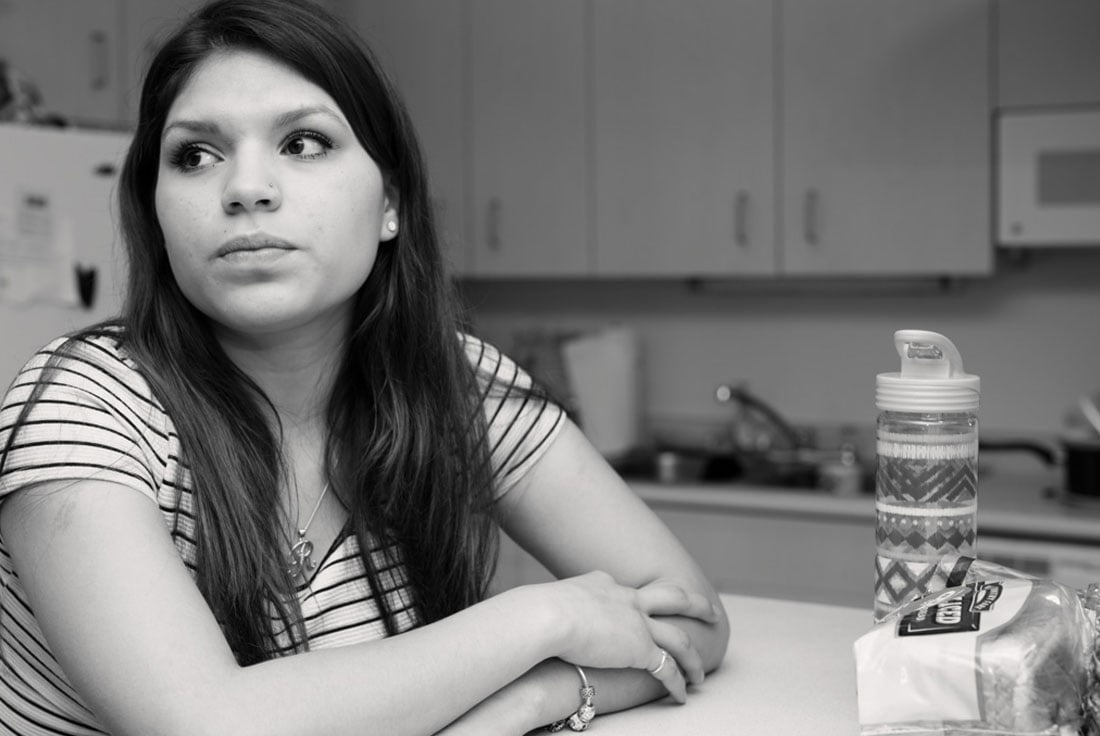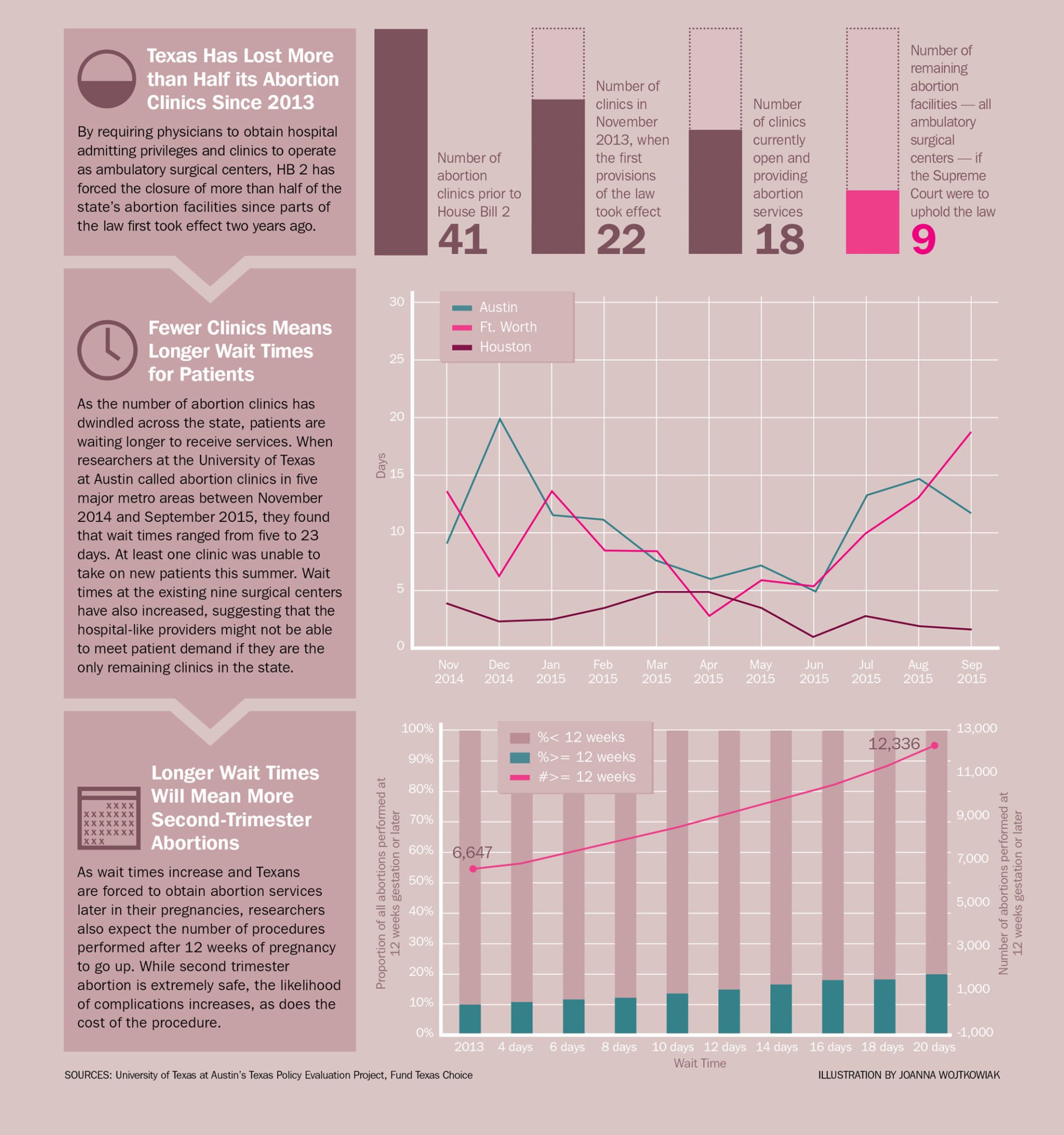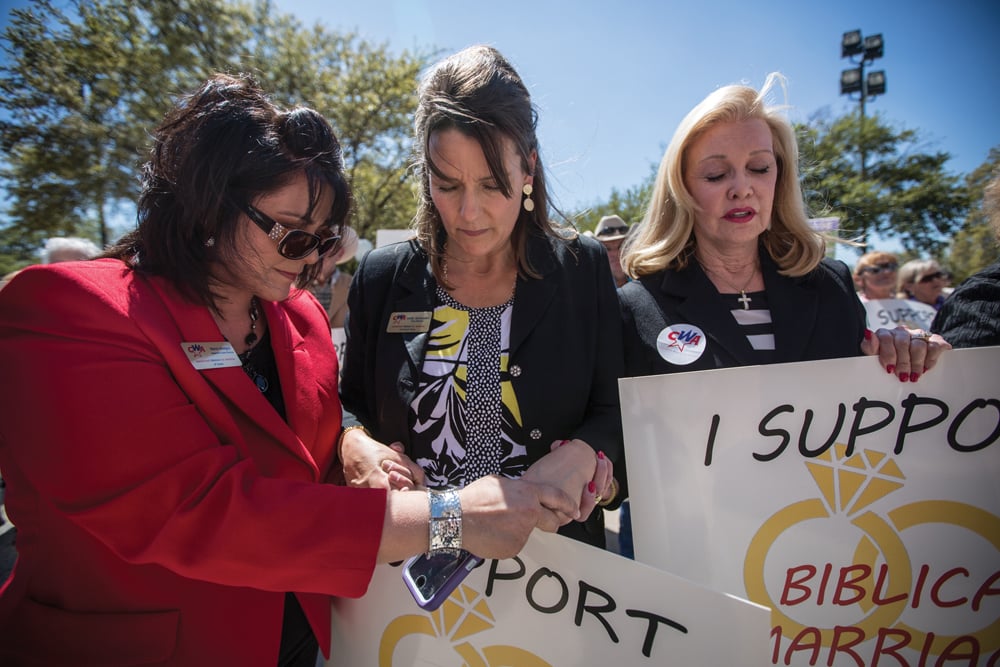
Closing the Gap: Seeking Better Care for Foster Kids in Texas
Foster kids live at the juncture of two broken systems, and the state is slow to find a solution.
A version of this story ran in the May 2015 issue.
Reyna Mondragon grips her hands together as she speaks into the microphone. The dimple on her left cheek shows up as she punctuates her words. It is a Wednesday morning in mid-March and she’s sitting at one of the Texas Capitol’s oak tables on the floor of the Senate chamber, where the Committee on Health and Human Services meets when the Senate isn’t in session. Lobbyists, reporters, legislative staffers and those here to testify stand against the brass railing or sit at senators’ desks.
Mondragon, 18, has a history of physical, emotional and sexual abuse. She has just “aged out” of the Texas foster care system, which serves more than 30,000 kids. The current norm for them—months or years of navigating a system that neglects their unique mental health needs—keeps most of them from living healthy and whole lives. Mondragon fought through the system to survive, and she’s here to fight for foster kids still in state care. “Kids should not be kept from having a normal life just because they are in foster care,” she tells the nine-member committee seated along the sides and at the head of the table.
I met Mondragon in April 2014 when she was a high school senior. This past year, I’ve been reporting on efforts to reform the state foster care system, the lack of caregiver oversight and inadequate funding for kids living with relatives. Mondragon told me about her past during a series of interviews at her adoptive home, her apartment and various Austin coffee shops.
Her story was shocking even to a reporter familiar with the system. This is this woman’s story in her own words. I’ve corroborated details of Mondragon’s story with caregivers and state documents. Her language is laced with profanity, and the details she offers are graphic. They involve sex, drugs and failed family relationships. As state lawmakers consider legislation to address the challenges kids such as Mondragon face, her willingness to step forward and offer her memories was impressive. It puts a face on the lives of those who depend on state help as they struggle to survive inside the gap between the Texas foster and mental health systems.
After the 2013 Legislative session, Texas Court Appointed Special Advocates (CASA) received a grant from the Hogg Foundation for Mental Health to look deep into that gap. CASA formed the Mental Health Task Force. Its membership includes more than 30 childhood trauma experts, health care professionals, state officials and advocates. In December, they reported that Texas has a highly dysfunctional network of mental health services and is relying on inadequately trained caregivers to navigate and access those services on behalf of foster kids.

Sarah Crockett, a co-author of the report, told the Observer that even highly qualified task force members had trouble understanding what the foster and mental health systems entailed. “It is difficult to imagine how a child could experience positive outcomes within all of these systems when few people, including those who work with and advocate for these children, understand the intricacies of each of them,” she says. “This labyrinth of systems, processes and services, and the general lack of knowledge about how to navigate them, can create significant barriers.”
The task force reported that foster kids experience mental illness at a rate almost 30 percent greater than the average child population and that they are less likely to get treatment. It found that unresolved trauma has enormous consequences that may follow kids to adulthood: learning difficulties, ongoing behavior problems, impaired relationships, poor social and emotional competence and shorter life spans. Kids don’t get appropriate trauma treatment and often are misdiagnosed and medicated for mental illnesses for which they don’t completely fit the profile. Mental illnesses such as bipolar disorder, major depressive disorder and ADHD exhibit symptoms similar to those related to severe childhood trauma. Caregivers are not adequately trained to care for traumatized kids, so kids become mistrustful of them, and cycle through multiple medical providers, foster families, group homes and treatment centers.
There are no easy solutions, Crockett says, but decisions lawmakers make will determine how the state moves forward with reform.
In the most recent comparative data available, Texas ranks 49th of 50 states in per capita mental health spending.
It won’t be cheap, either. Despite last legislative session’s $255 million mental health budget increase (up 15 percent from the year before), the system continues to be chronically underfunded. In the most recent comparative data available, Texas ranks 49th of 50 states in per capita mental health spending. If the Legislature merely maintains the mental health care budget this session, federal funding included, it also is likely to maintain that ranking. “The system itself is an abused and neglected system,” says child psychiatrist Dr. Laurie Seremetis, “and they’re supposed to be taking care of abused and neglected kids.” Seremetis is a consultant for several Austin-based nonprofits, where she treats foster children and specializes in PTSD. “I see these incredibly complex kids who have grown up their whole lives in a way that doesn’t promote anything positive,” she says. “By the time kids get to my office, it’s too little, too late, and medications aren’t going to fix them. … I want to see trauma-informed ways of working with the child and understanding the child so that their acting-out behaviors are not just labeled bad, but are seen for what they are: ‘This kid has been through hell and is defending themselves the best way they know how.’”
Mondragon was born the second child of an absent father and a teenage mother. She says that she, her older brother and two younger sisters were left alone for days at a time in an Austin apartment with food, spare change, a landline and a phone number to call for help. By the age of 10, she was the younger children’s main caregiver. She watched over her kid sister and the baby girl; she fed them and changed diapers. She hated the responsibility, so, like her parents, she also started leaving.
“I’m a kid taking care of a baby, you know, and I just couldn’t handle it,” she says. “That’s why I was constantly smoking weed, constantly doing coke. I even started selling coke for a minute. To this day it kind of kills me because, in a way, I feel like I was being that same person [my mother was].”
Mondragon says she stayed out longer and came home less. She hung out on corners with kids five to 10 years her senior. When she was home, she says, her mother would use abusive language, call her names and tell her to leave. She says friends influenced her to trade sex for favors: car rides, a place to stay, alcohol, weed and cocaine.
Close to her 11th birthday, Mondragon says, she was brutally raped. She had been high, drunk and left alone by friends with several men they had just met. She remembers being trapped in an apartment the entire night. When she was allowed to leave the next morning, she says, she was still drunk and in excruciating pain.
“That day I just felt like shit and I didn’t know … where the fuck to go,” she says. “I didn’t know what the fuck to do. I didn’t. I felt like I was going to fucking die. Everything was hurting, like, down there. I couldn’t even stop and, like, just really sit down. I couldn’t even, like, fucking … fucking walk straight. I couldn’t even walk straight. I was in so much pain after that happened. A couple of days passed, and I was still in fucking pain.”
Mondragon was too embarrassed to tell anyone about the rape. “I was bleeding a lot. I would just kind of put [sanitary] pads on because I didn’t know anything,” she says.
She says her mother eventually drove her to a hospital. From there, Mondragon went to the Austin State Hospital. After she was released, Mondragon says, she went back to skipping school, and to abusing drugs and alcohol.
A year later, in 2008, she says, police found her running through woods one morning near the Rundberg area of North Austin. Her memory of the event is hazy. Officers later told her she was blacked out with a 0.3 blood alcohol level. She remembers that she hadn’t been home for weeks, that she’d been drinking for days and that she ended up in a hospital, where nurses called her mom to come pick her up. Mondragon says her mom refused to take her home, and the hospital called Child Protective Services. She was now Texas’ responsibility.
Between the ages of 11 and 17, she was placed in two different foster homes, one emergency shelter, a group home and a residential treatment center. She was unsuccessfully reunited with her mother for six months at age 12. She was admitted to psychiatric hospitals and visited psychiatrists, counselors and therapists. Her substance abuse, sexual acting-out and aggression were medicated and misdiagnosed as bipolar disorder by a group home psychiatrist, according to her former CASA worker and adoptive mom.

At age 13, Mondragon was placed with a foster mom who allowed her to manage her own appointments and medications. She was almost adopted at age 16, but that fell through. She says she self-medicated with weed to ease her depression, took diet pills, binged, purged and starved herself. She was adopted at age 17, a few months before the state would emancipate her with benefits or enroll her in extended foster care.
She says she rarely got guidance from therapists on how to deal with her past. “We’d go into detail. It’s like I was there again,” she says. “If I did certain things, like going and having sex with boys or doing drugs, [caregivers] would just like threaten me and tell me to stop.”
Finally, under the care of her adoptive parents, Mondragon began to get the help she needed. A few months after her adoption, there were arguments about her continued weed use. She was sent to a drug rehab program and then to a sober house. Mondragon says she felt that the family no longer wanted her. By January of this year, Mondragon had little positive contact with her adoptive parents and lived in a shared apartment in Southeast Austin. She felt abandoned yet again.
Karyn Purvis, Director of the TCU Insititute of Child Development and a member of CASA’s task force, says trauma changes the structure of a child’s developing brain. “There’s this gorgeous part called the cortex that makes us who we are,” she says. “[It’s] the beauty of human personality, of compassion and the ability to interact and care about others.”
When a child experiences a traumatic event, Purvis says, this part of the brain freezes and the child goes into survival mode. Punishment, isolation or overmedication can reinforce the pain and re-traumatize the child. She says that it is imperative that caregivers know that when a child has bad behavior—such as fighting or substance abuse—that’s not the child. That’s the child’s pain, the child’s fear.
Every child in care has experienced trauma, Crockett says, “So when we’re talking about how to improve child welfare, if we’re not talking about trauma, then what are we talking about?”
Every child in care has experienced trauma, Crockett says, “So when we’re talking about how to improve child welfare, if we’re not talking about trauma, then what are we talking about?”
When the task force formed, Crockett says, there was little information on the state’s mental health services for foster kids. “We [now] know that there are pockets of training and information around trauma-informed interventions happening across the state,” Crockett says, “but we have no idea what that looks like in any meaningful way. We don’t know what services are even covered and what services are available in different areas.”
Dr. James Rogers, medical director for the foster care system, says the state has been working on trauma-based education for child welfare workers and foster parents since November 2012. During the 81st legislative session the state also mandated that staff obtain two to eight hours of trauma-informed training.
Mondragon advocates for foster kids while enrolled in community college, working at UT-Austin’s Child and Family Research Institute as a research assistant, and organizing as president of the region’s Youth Leadership Council. She sees a psychiatrist and a therapist regularly and works to understand her own trauma-related behaviors. She dreams of becoming a state official, where she says she can effect the most change.
Mondragon worked hard to sit in front of the Senate committee and encourage members to consider more trauma-informed bills such as the one she is speaking on this March morning. She holds back on some of the more graphic aspects of her past. Her testimony focuses on the details of her life that are relevant to the bill, which was written narrowly to soften regulations on approved activities for foster kids. (The task force found that an important part of healthy kids’ lives includes flexibility and unfettered play.) It is one bill of many this session that came out of the task force’s work.
“I feel like I missed out on so much,” Mondragon tells the senators. “I still struggle on choosing the right relationships in my life, and I think it’s because I didn’t get a chance to learn what kind of people to surround myself with. While I didn’t get the opportunity to have a normal childhood, I feel that my brothers and sisters in foster care should.”
When Mondragon ends her speech, state Sen. Lois Kolkhorst (R-Brenham) leans into her own mic. “We appreciate your courage and look forward to making the system better,” she says. “With your help we can do that.” Mondragon smiles and the dimple on her left cheek reappears.
Listen to Beth Cortez-Neavel discuss this story on Texas Standard:
This story made possible by a grant from the Fund for Investigative Journalism.


